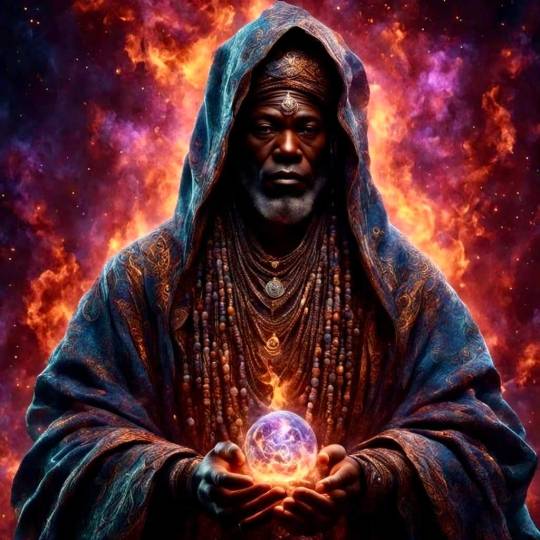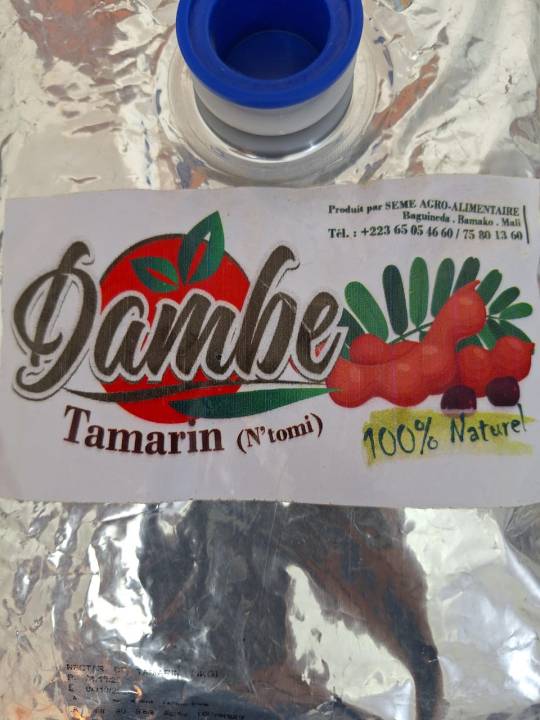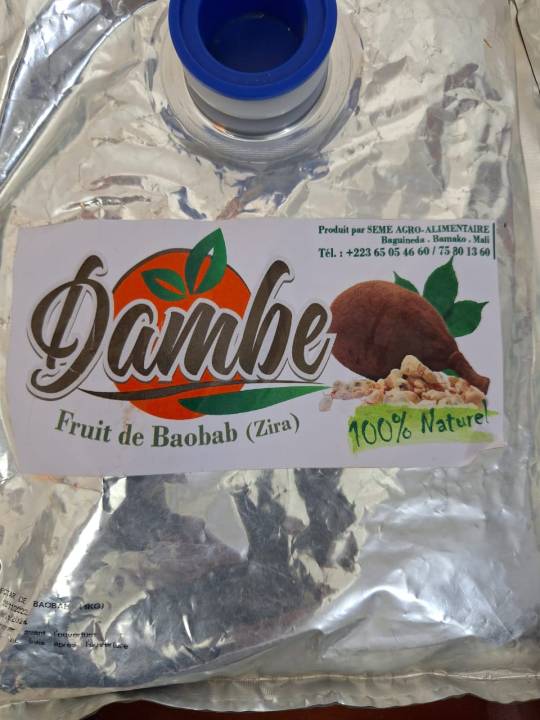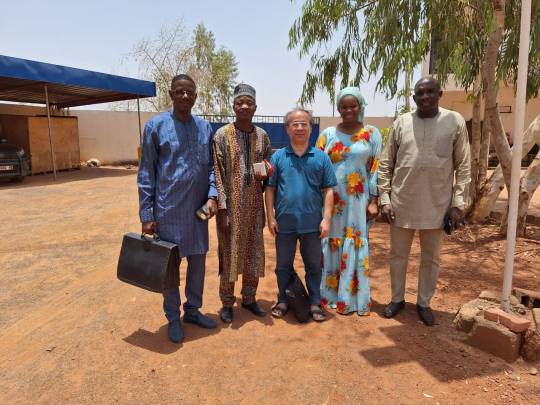#Ibrahim Ba
Text

Ibrahim Ba, AC Milan 1997-98.
2 notes
·
View notes
Text
Será una carnicería… “En Las Profundidades Del Sena”

Mediados de 2024. París es el epicentro del Triatlón Mundial por primera vez en la historia. Pero cuando descubren la amenaza de un enorme tiburón en el fondo del río Sena, una brillante científica y una joven activista no tienen más opción que aunar esfuerzos con un comandante de la Policía para evitar una masacre.
Estreno: 5 de junio de 2024 en Netflix.
youtube
La película está dirigida por Xavier Gens y cuenta con las actuaciones de Bérénice Bejo, Nassim Lyes, Léa Léviant, Anne Marivin, Nagisa Morimoto, Sandra Parfait, Iñaki Lartigue, Aksel Ustun, Aurélia Petit, Marvin Dubart, Ibrahim Ba, Daouda Keita, entre otros.


#Sous la Seine#Bérénice Bejo#Nassim Lyes#Léa Léviant#Anne Marivin#Nagisa Morimoto#Sandra Parfait#Iñaki Lartigue#Aksel Ustun#Aurélia Petit#Marvin Dubart#Ibrahim Ba#Daouda Keita#Películas#Netflix
0 notes
Text
Morgenland-Festival '22
Morgenland-Festival ’22
Das gab es in dieser Form noch nicht: Das Morgenland Festival Osnabrück 2022 bringt in diesem Frühsommer ein spektakuläres Musiktheaterwerk auf die Bühne. Die Uraufführung der Oper „Songs for Days to Come“ von Kinan Azmeh am Samstag, 4. Juni, im Theater am Domhof, wird gleichzeitig die Eröffnung des Festivals sein.
Bis einschließlich 18. Juni stehen etliche weitere Konzerte mit MusikerInnen aus…

View On WordPress
#Angela Boutros#Bab L’Bluz#Basilius Alawad#Damian & Delaine Le Bas#Dima Orsho#Ibrahim Keivo#Ivo Papasov#Jalgasbek Iles#Kinan Azmeh#Mónika Lakatos#Mehdi Aminian#Merima Ključo#Mevan Younes#Michael Dreyer#Mohannad Nasser#Morgenland All Star Band#Morgenland Festival#Moslem Rahal#Naīssam Jalal#Osnabrück#Osnabrücker Lagerhalle#Romengo#Saman Gambaro#Sanne Rambags#Under the Surface“#Yasamin Shahhosseini
0 notes
Text
A woman from Surrey, B.C., is being remembered as a "hero" and a "vibrant soul" after her husband said she protected their infant son from a gunman who killed her and five others in Austin, Texas, last week.
Sabrina Rahman, 24, had moved into a new home in the state capital with her husband Ishraq Islam and one-year-old son Ibrahim just a day before the shooting, Islam said.
She was walking with Ibrahim and her friend Emmanuel Pop Ba in their new neighbourhood shortly after noon on Dec. 5 when the gunman opened fire, killing Pop Ba, Islam told CBC News.
Continue Reading
Tagging @politicsofcanada
#cdnpoli#canada#canadian politics#canadian news#united states#texas#british columbia#mass shooting#gun violence#shooting
63 notes
·
View notes
Text
!! ️SCHOOL WILL NEVER TEACH YOU THIS👇🏿
|| THE AFRICAN ORIGIN OF THE NAME ISRAEL ||
The teachings of Bundu Dia Kongo.
Ne MUANDA NSEMI teaches the Makesa mu Nzila Kongo: the mystery of the name, because the name is the carrier of evil and beneficial influences to the one who bears it.
The name is also linked to a person's state of being.
Como example: with Zulu Makeba, with MBEMBA ZULU, with NKEMBO WA MONESUA, with NSANSUKULU A KANDA, YAYA VITA KIMPA, MFUMU KIMBANGU, with MUANDA NSEMI, NAVITA NGOLO, MFUKA FUAKAKA MUZEMBA etc.
Ne MUANDA NSEMI also teaches Makesa mu Nzila Kongo that speaking French, English is not synonymous with being intellectual.
Africans have become, complexly, foreign languages fanatics. Africans believe that giving a French, English or Hebrew name would have more meaning than in their mother tongue.
Example:
-that one called PEDRO thinks it's better to be called a stone than to be called TADI in his mother tongue which is KIKONGO.
- whoever is called ELOHIM believes this designation is divine in origin, but refuses to be called ELIMA in their language, while ELOHIM= ELIMA in Kikongo.
.
Ne MUANDA NSEMI teaches the Makesa mu Nzila Kongo that the word KELIMA means a Messenger God, a Genius, an Angel. When the letter 'K' falls, KELIMA becomes ELIMA, in the plural BIKELIMA: the flashing, the SEZIMA, the SELIMA.
.
Elima word expansion, adding letters. Oh give the words Elohima Elohim in Hebrews
Eli, El, stands for ELIMA, Kelima.
Give names like: EL Fatah, EL Chadai, ELION.
The abbreviation " EL " is also in the name of God, Archangels, Prophets in the Hebrew language as: Deus Yave Israel. Archangel Michael, Michël, Raphael, and other names such as: Ishmael, Samuël, Daniël, Emmanuel, Ezequiël...
.
Kelima, Elima is synonymous with God of Simbi, Nomo, a messenger God, a Genius of Nature, an Angel, a Radiant of Light.
No more no less On the cross Jesus shouted Elima (=Eli), Elima (=Éli), why have you forsaken me?
.
A Kelima, an Elima is a Great Mulimu, a Great Spirit of Nature: Each Elima has its own name:
And HOGU BATALA, OUR KAMBISI, KOLOKOSO, OUR KINZOLA, OLONGO, OUR MANDOMBE KALI, LUEZI (LUEJI, LUEJ, RUEJ) , RA, ISISI, MANATA LUDI etc.. These are some famous Elima from Egyptian BUKONGO.
.
Isis stands for Isisi: a goddess (an Elima) of Ancient Egypt.
.
Ra is a male Elima (+), isisi a female (-).
IS, RA, EL giving Israel. It is the fusion of positive (Ra) and negative (isisi), the union of man and woman gives an androgynous Elima (EL), both male and female. An equal Elima is called Mahungu, Malunga, Ilunga, Complete Being, made in the image of the Great God KONGO KALUNGA.
.
The holy book of Kongo (MAKONGO) religion teaches that Kana was the land of High Priest MELCHISEDEK.
Mukana verb means Nkua Vema, an enthusiastic, a passionate, a jealous, a fanatic.
Kikana is fanaticism: Bakana ba Nzambi are fanatic of God, KANA, KANANA country.
Originally Kana and Madian were inhabited by blacks
Midian was inhabited by the High Priest, Gestro (Yetelo), this High Priest of Bukongo teaches Moses to contact the Angel of the people of Israel who is the God of Israel.
Kana was inhabited by High Priest Melchisedek, this High Priest of Bukongo teaching Hibrahim, Abraham to enter into communion with God of Israel.
.
In kikongo language the sun is called Ntangu lowa the Great Nabi Kongo say the heart of the sun is called KISEDEKI.
-so MAMBU MELE KISEDEKI i mean problems went to the heart of the sun. The word MELE is a Kikongo verb form from the verb KUENDA which means to go.
.
In Bukongo, a Great Nabi Kongo that serves as a transmission channel between the Assemblies of God (Temple) and the Heart of the Sun, bears the grand opening title of Ne MELE KISEDEKI.
.
The bible says Melchisedik king of Salem brought bread and wine. He was a sacrifice of a very high God. He bless Abraham by the most high God
Ibrahim (Abraham) gave Dime to Mechisedek (Genesis 14: 18-20)
So here is Abraham, the first prophet of God of Israel) who is blessed by a High Priest black a Great Nabi Kongo, Ne MELE KISEKEDI.
Abraham father of the faith of the white Hebrews pay Dime to the Priest of the Most High God Ne MELE KISEDEKI King and Priest of KANA we will distort in Kanan Canaan because of their variants Kanana.
- Thus Abraham (Ibrahim) imitating copying the language of the people of Kana (THE BAKONGO) and distorting the graft in the Hebrew language, these words distort the source in Kikongo
- in Kikongo language
Excerpt from the book The Mysteries of KIKONGO
Written by NE MUANDA NSEMI Nlongi' to KONGO.
Kinshasa on 22-11-1995

9 notes
·
View notes
Photo

BREAKING: ELEANORE AND IBRAHIM SPOTTED OFF THE COAST OF TARTOSA
A week following their bombshell engagement announcement, the soon-to-be-man-and-wife were spotted living it up aboard a yacht off the coast of beautiful Tartosa. The two former royals were photographed canoodling and laying on some serious PDA during their posh ocean cruise.
This is the first time the two have been spotted together since news of their engagement broke. The announcement left a lot of people wondering how and when the two reconciled and resumed their relationship. A source close to the couple now reveals that there was no reconciliation to be had:
“There was no reconciliation necessary because they never really broke up. They were apart, sure, but they were just separated by distance. During Ibrahim’s ‘sabbatical,’ he was under his father’s tight watch, but he’s very crafty. He found ways to meet up with E. And they had help, lots of help. Those two have a wide network of friends and connections who were more than willing to assist the star-crossed lovers.
Like what Ibrahim told his father, his relationship with E may have started off as a lie, but eventually, things turned real and he was not joking about marrying Eleanore.”

(Above: Making up for lost time? Eleanore and Ibrahim seemed inseparable all day.)
Even during their supposed break-up, the two managed to take care of each other. For starters, Ibrahim made sure that E was always safe. The source spills:
"Ibrahim, despite Eleanore’s protests, got her a bodyguard to watch over her 24/7 and to make sure she’s safe. The bodyguard always photographed with and around E is actually the brother of Ibrahim’s head of security, and is a former member of Al-Simhara’s special forces. Since he couldn’t be there to ensure her safety, Ibrahim had to settle for the next best thing.
Eleanore, meanwhile, made sure that they spoke every day, especially after Ibrahim’s breakdown. He was really, incredibly down following the cancellation of their wedding, and I think it affected him more, emotionally, at least. The man was a mess, but Eleanore saved him. She was actually afraid for his well-being, and since they couldn’t really be together, they had to make do with their nightly calls. Due to the time difference, E would stay up all night to talk to Ibrahim, cheering him up, and reassuring him that things would be okay. In the rare occasions that they found a way to actually be together, she’d cook for him and just generally be there for him.”

(Above: The two sailed around the coast in style aboard a massive luxury yacht.)
So what triggered the sudden reveal? Ibrahim was reportedly “tired.”The source adds:
“He was just tired. He hated the situation they were in. He was so annoyed about hiding what they have when in reality, he wanted the whole world to know. Eleanore was not his dirty little secret. He knew that Eleanore deserved so much more than sneaky dates and rushed meetings. It wasn’t fair for either of them. So he snapped - in a good way.
A few months ago, he reached out and contacted Prince Jacques. They met in Prince Jacques’ hunting lodge in Rennaux. He was surprised when he saw that Queen Emilia tagged along. He apologised and just lay his cards on the table - he told them that he was going to marry Eleanore and it would be great if they could have their blessing.
The Queen and The Prince told him that their blessing is not necessary, but Ibrahim was adamant. He wanted Eleanore to have her family back, especially since he knew, at that time, that he was going to lose his. He didn’t want that for her. So he spoke to Eleanore about his meeting with her parents, and they both decided to very slowly, but surely, reconnect with her family. Eventually, Ibrahim got the Queen and Prince Jacque’s blessing. A day after, he announced that he was stepping down as Crown Prince.”

(Above: At some point, Ibrahim was seen giving a giggling Eleanore a piggy back ride around their swanky yacht.)
So is Eleanore back into the Royal Family fold? Kind of. The source further reveals:
“E actually has a good relationship with her parents now. A lot better than what they had back then. They text. They call. Prince Jacques, especially, is always in contact with her. She’s also rebuilding her relationship with her siblings. She video called with Nicky during his competition, and Alistair during his graduation. She’s been sending them gifts. There wasn’t really any love lost with Ingrid - they’ve remained close and in contact throughout E’s ordeal. But E is having the most trouble with Anya. As it stands, there is no ‘relationship’ to speak of. The Crown Princess is a tough nut to crack. There’s trust and love lost there, for sure. She (Anya) blocked E completely, cutting off all ties and communication. When E flew to Brindleton for a low-key trip, she tried to visit Anya in her house, but she was denied entry. There’s a deep wound between those sisters, and it’ll take a lot more time to heal that rift.”

(Above: The lovers looked completely enamoured with each other and both looked mighty happy. It’s great to see these two look so relaxed and completely at ease after everything they’ve been through.)
So what makes this engagement different from the last? Apparently, it’s genuine:
“This time, it’s the real deal. Nothing could stop these two from being together. They’ve lost so much and they, quite frankly, moved heaven and earth to be with each other. Eleanore lost her beloved titles and her old life, while Ibrahim lost his Kingdom, his family. But together, they finally have peace and happiness, and more importantly, each other.
Last time, that engagement was all for show. This time, it’s genuine and much more sentimental. They’re not really hoping for a huge wedding - just an intimate affair with family and friends. And that ring - it’s over 100 years old. It belonged to Ibrahim’s great-grandmother, and was one of his mother’s most prized possessions. To have Eleanore wear it is one of his life’s greatest honours.”
Okay, hold on one second, who knew Ibrahim was such a hopeless romantic? Now we *really* can’t wait for the big day! We can’t help but root for these two!
While it’s sad that Anya and E are still not speaking, it’s great to know that at least, E and the rest of the family are on much better terms these days.
#ts4#theroyalsims#ts4 story#ts4 legacy#simblr#ts4 simblr#ts4 royals#ts4 royal story#ts4 royal legacy#ts4 royal family#ibrahim#eleanore#mystory
62 notes
·
View notes
Text
Ibrahim tatlisesten I like the way to kiss me’yi dinlediniz mi tam bir bas yapit
5 notes
·
View notes
Text
Pâques : un aboutissement, un renouveau ou une fidélité ?
Avec la fin du Carême et celle de la Semaine Sainte, les chrétiens non-orthodoxes voient arriver la grande fête de la Résurrection : l'Homme, désormais, sait –ou peut savoir, s'il sait écouter– que son destin, à sa mort, ne devrait pas se confondre avec celui de la “fourmi écrasée”… dont il ne reste rien. Certes, ce n'est qu'un espoir, dont nul ne peut raconter avoir des souvenirs, mais… que c'est beau, d'espérer, au moment où 184 citoyens croient réfléchir en toute liberté à ce qu'on leur a dit qu'ils devaient penser sur la vie, la mort, la souffrance, le mal… Allons un peu plus loin...
Cette année –c'est souvent le cas– la fête de la Pâque chrétienne (le 9 avril) est très proche de la fête de Pessah (le 5 avril) qui réunit les juifs du monde entier dans le souvenir de la fuite d'Egypte de leurs arrière-arrière-ancêtres. Et la profondeur de ma catholicité ne m'empêche pas de me remémorer ces années où je suivais avec gourmandise les cours des ’‘Lundis’’ du Grand Rabbin Sitruk, qui enseignait “la Foi d'Isra'ël” (Yisra'ël = “Dieu, ’'El”, est vainqueur’’) avec ce mélange irrésistible de culture, de sincérité, de charme, d'intelligence pétillante, de drôlerie, d'humour et de profondeur sérieuse qui le rendaient unique dans sa complicité avec son Dieu… parfois si proche du nôtre. Je me dois d'ajouter que ce juif séfarade né à Tunis avait par moments un accent “pied-noir” à couper au couteau, qui s'imposait parfois à lui : ses intonations empreintes de “pataouète” avaient le don de me replonger dans les plus belles heures de mon enfance et faire revivre mes camarades de classe.
In memoriam, je vais donc me lancer dans un numéro d'équilibriste : parler de Pâques et de Pessah dans un seul éditorial… Comme toujours, je compte sur l'indulgence des lecteurs de ce Blog, si souvent vérifiée, pour “oser oser” –comme nous disions, là-bas. (NB : Je n'ai pas réussi à établir le même parallèle avec l'AÏd el-Fit'r, la Fête de la rupture –NB : celle du jeune du Ramadan– qui arrive le 20 Avril et qui commémore le sacrifice d'Abraham, Ibrahim pour les musulmans). Pâques est la fête de la Résurrection, qui est une perpétuation de l'Homme dans ce qu'il a de plus sacré, de plus authentique et de plus beau en lui, que l'on appelle le plus souvent “son Ame”, même si ce nom ne plaît pas à certains… tandis que Pessah se définit comme une Fête de la Transmission, qui, en dernier ressort, peut parvenir à des résultats très proches, chaque Transmission étant une petite tranche d'éternité qui a été protégée –puisque sauvée de l'oubli par un nouvel intervenant…
Toute famille juive, en préparation de cette Fête, se doit d'éliminer, dans la maison, la moindre trace de “Hametz”, ce levain dont l'absence a permis d'emporter, dans la fuite hors d'Egypte, des galettes plates, dites “Matsa” (= pain azyme). Il est utile de préciser que ce “Hametz” pourchassé, désigne aussi, au delà du levain, tout ce qui fermente –et peut rendre l'homme mauvais : la haine, les rancunes, les non-dits, les griefs accumulés, les jalousies rentrées… et tout ce qui pourrait envenimer les relations entre les humains, et qui ne doit donc pas être “transmis”… comme sera écarté le ‘’mauvais larron’’ qui ne se retrouvera pas “ce soir, dans le Paradis”, lui.
Le soir de Pessah, le “Séder” est le moment de la transmission positive : autour de la table soignée, ornée, la famille écoute la lecture de passages de la Haggada (= le récit la Transmission), riche en discussions rabbiniques. Le Père dans son rôle de guide, lit à ses enfants le récit de la Sortie d'Egypte, qui assure une éternité du peuple d'Isra'ël, de génération en génération. On y évoque les attitudes qui peuvent être prises devant cette “Transmission’' : la soumission, l'acceptation, le doute, le refus, et l'indifférence. Et le questionnement, car les Anciens avaient déjà compris cette vérité, stupidement oubliée de nos jours : l'être humain se définit plus par la question posée que par l'écoute de la réponse donnée, et c'est dès la plus haute antiquité que les pères transmettent ’'ce qui est et ce qui doit être”, et que les fils sont des perturbateurs qui provoquent et remettent en question ce qu'on voudrait tant qu'ils “passent”, leur jour venu… même si, le temps coulant, ils s'assagissent le plus souvent et réparent leurs erreurs en devenant des ‘’passeurs’’, à leur tour.
Notre temps, on le constate chaque jour, semble avoir porté à son paroxysme la trahison-de-masse du double message de Pâques et de Pessah : la vie après la vie, d'une part –que des cuistres incultes prétendent ratatiner autour d’une loi de circonstance sur un affreux “être-suicidé-par-un-autre”… parce qu'il a été raconté que “c'était plus digne” (sic !)… et l'intérêt de transmettre quoi que ce soit, d'autre part, puisque la vie ne serait rien d'autre que… rien ! Si nous ne nous contraignons pas à “transmettre” ce qui doit l'être –y compris notre foi en une “Résurrection” (qui, dans le fond, n'est pas impossible : qui peut affirmer sérieusement qu'il n'y aurait rien, “après” ?)– nos enfants ne seront même plus capables de poser une question.
De plus en plus noyés dans des flots d'informations, nos contemporains sont tentés de croire qu'ils ont déjà la réponse… sans voir que les informations reçues sont, au mieux, totalement inutiles, et criminellement mortifères, au pire… Pères et fils sont sidérés, désorientés et en même temps fascinés par la multitude de sujets qui leur tombent dessus, au point de leur ôter toute envie de poser la moindre question ou de chercher une réponse : l'esprit critique est en perdition ! Nous ne vivons plus dans une société de consommation –selon une expression popularisée dans les années '50 par Jean Baudrillard– mais bel et bien dans une société de l'indigestion permanente et de l'abrutissement programmé, par excès de faux savoirs inutiles.
Car notre modernité techno-capitalistique ne s'embarrasse guère des traditions ou des explications qui vont bien loin au delà de son indéniable force de persuasion commerciale à usage instantané : l'Homme doit désormais ne se nourrir que de ce qui se fabrique, s'achète, se vend, et surtout : rapporte. Or… quel est le circuit économique qui peut vivre et prospérer sur des idées aussi peu rentables que la commémoration d'une fuite hors d'Egypte il y a 35 siècles, ou que la sortie du tombeau d'un Dieu-fait-Homme, il y a 2000 ans ? Ah ! Parlez-moi de donner gratos des armes à l'Ukraine… pour que les donateurs doivent les renouveler, en dollars sonnants et trébuchants, à un prix doublé… Ça, c'est du “bizzness”. Parlez-moi des 4 milliards de doses de “vaccin” achetées au prix le plus fort et sans marchander –corruption oblige !– par l'Europe-institution, pour continuer à se transmettre le virus du covid, à ne pas être protégé et à se réfugier derrière une “protection des cas graves” qu'aucun chiffre au monde n'a démontrée une seule fois ! Ça, c'est du lourd. Mais l'Egypte… le Christ… et puis quoi, encore ? (NDLR : il faut dire “le” et non “la” covid, puisque le “d” final de covid est celui de “Disease”, neutre en anglais. Et le neutre, en français, se décline au masculin, sauf très rares exceptions répertoriées. Si on tient à le féminiser comme l'Académie l'a fait avant d'admettre son erreur, il faudrait dire “la covim”, avec le “m” de maladie. C’est hors sujet).
La situation est plus grave que beaucoup ne le croient : il s'agit de la disparition totale, en moins de 2 générations, de plusieurs millénaires (deux, ici… trois et demi, là…) d'une culture, dite “judéo-chrétienne”, qui n'a jamais tendu, à travers et malgré tant de vicissitudes, d'erreurs de parcours, d'échecs et d'impasses, qu'à confirmer, en l'Homme, une “créature de Dieu ou de Yahweh-Adonaï”, comme un roi de la création, idée ou idéal qu'ont repris, en la rendant folle, et sans oser le reconnaître, la totalité les “inventeurs” de ces divinités, plus ou moins farfelues et plus que moins insensées, qui ont eu l’ambition de remplacer le bon grain par leur ivraie.
La volonté de fabriquer de toutes pièces un “Homme nouveau” est, encore aujourd'hui, la seule base que revendiquent le transhumanisme, le féminisme, la théorie du genre, le progressisme et toutes les constructions-déconstructions assassines qui ambitionnent le grand remplacement de tout ce qui a existé jusqu'à elles, pour le remplacer par leur néant majuscule… Et le fait qu'aucune d'elles ne soit viable hors du cadre sécurisant puisque sécurisé que nous lui offrons –fut-ce à notre corps défendant– n'est pas de nature à ouvrir les yeux à leurs promoteurs… En dehors de ces non-systèmes dystopiques, Pâques et /ou Pessah nous offrent, rituellement, une nouvelle chance de réagir avant qu'il ne soit définitivement trop tard. C'est notre responsabilité la plus sacrée et notre tache la plus grandiose que de susciter le réveil et l'ouverture au monde de nos enfants, en grand danger de mort à leur propre humanité. Ne la laissons pas passer : les conséquences seraient terribles ! Antidote : Joyeuses Pâques aux uns, et Bonne Pessah aux autres !
H-Cl.
4 notes
·
View notes
Text
🥀🕯🥀 Shahadat Anniversary –
Lady Khadija (sa) 10th Ramadhan
The Most Beloved Wife of the Holy Prophet of Islam (S)
Fascinating historical background of this great lady of Islam “Islam did not rise except through Ali’s sword and Khadija’s wealth,” a saying goes.
Khadija al-Kubra (sa) daughter of Khuwaylid ibn (son of) Asad ibn Abdul-`Uzza ibn Qusayy belonged to the clan of Banu Hashim of the tribe of Banu Asad. She was a distant cousin of her husband the Messenger of Allah Muhammad ibn Abdullah ibn Abdul-Muttalib ibn Hashim ibn Abd Manaf ibn Qusayy, Allah’s peace and blessings be upon him and his progeny. Qusayy, then, is the ancestor of all clans belonging to Quraysh. According to some historians, Quraysh’s real name was Fahr, and he was son of Malik son of Madar son of Kananah son of Khuzaimah son of Mudrikah son of Ilyas son of Mazar son of Nazar son of Ma`ad son of Adnan son of Isma`eel (Ishmael) son of Ibrahim (Abraham) son of Sam son of Noah, peace and blessings of Allah be upon the prophets from among his ancestors.
🥀 Her Birth 🥀
According to a number of sources, Khadija (sa) was born in 565 A.D. and died on 10th Ramadhan three year before the Hijra (migration of the Holy Prophet and his followers from Mecca to Medina) at the age of 58. Khadija’s mother, who died around 575 A.D., was Fatima daughter of Za’ida ibn al-Asam of Banu `Amir ibn Luayy ibn Ghalib, also a distant relative of Holy Prophet Muhammad (S). Khadija’s father, who died around 585 A.D., belonged to the Abd al-`Uzza clan of the tribe of Quraysh and, like many other Qurayshis, was a merchant, a successful businessman whose vast wealth and business talents were inherited by Khadija (sa) and whom the latter succeeded in faring with the family’s vast wealth.
🥀 Ameerat-Quraysh 🥀
It is said that when Quraysh’s trade caravans gathered to embark upon their lengthy and arduous journey either to Syria during the summer or to Yemen during the winter, Khadija’s (sa) caravan equalled the caravans of all other traders of Quraysh put together. Although the society in which Khadija (sa) was born was a terribly male chauvinistic one, Khadija (sa) earned two titles: Ameerat-Quraysh, Princess of Quraysh, and al-Tahira, the Pure One, due to her impeccable personality and virtuous character, not to mention her honourable descent. She used to feed and clothe the poor, assist her relatives financially, and even provide for the marriage of those of her kin who could not otherwise have had means to marry. One particular quality in Khadija (sa) was quite interesting, probably more so than any of her other qualities mentioned above: she, unlike her people, never believed in nor worshipped idols. There was a very small number of Christians and Jews in Mecca, and a fairly large number of Jews in Medina. Waraqah ibn Nawfal, one of Khadija’s cousins, had embraced Christianity and was a pious monk who believed in the Unity of the Almighty, just as all early Christians did, that is, before the concept of the Trinity crept into the Christian faith, widening the theological differences among the believers in Christ (as).
He reportedly had translated the Bible from Hebrew into Arabic. His likes could be counted on the fingers of one hand during those days in the entire populous metropolis of Mecca, or Becca, or Ummul-Qura (the mother town), a major commercial center at the crossroads of trade caravans linking Arabia with India, Persia, China, and Byzantium, a city that had its own Red Sea port at Shu`ayba. Most importantly, Mecca housed the Ka`ba, the cubic “House of God” which has always been sought for pilgrimage and which used to be circled by naked polytheist “pilgrims” who kept their idols, numbering 360 small and big, male and female, inside it and on its roof-top. Among those idols was one for Abraham and another for Ishmael, each carrying divine arrows in his hands. Hubal, a huge idol in the shape of a man, was given as a gift by the Moabites of Syria to the tribesmen of Khuza`ah, and it was Mecca’s chief idol. Two other idols of significance were those of the Lat, a grey granite image which was the deity of Thaqif in nearby Taif, and the Uzza, also a block of granite about twenty feet long. These were regarded as the wives of the Almighty… Each tribe had its own idol, and the wealthy bought and kept a number of idols at home. The institute of pilgrimage was already there; it simply was not being observed properly, and so was the belief in Allah Whom the Arabs regarded as their Supreme deity. Besides Paganism, other “religions” in Arabia included star worship and fetishism.
🥀 The Richest Person in Arabia 🥀
Since Khadija (sa) did not travel with her trade caravans, she had always had to rely on someone else to act as her agent to trade on her behalf and to receive an agreed-upon commission in return. In 595 A.D., Khadija (sa) needed an agent to trade in her merchandise going to Syria, and it was then that a number of agents whom she knew before and trusted, as well as some of her own relatives, particularly Abu Talib, suggested to her to employ her distant cousin Muhammad ibn Abdullah (S) who, by then, had earned the honouring titles of al-Sadiq, the truthful, and al-Amin, the trustworthy. Muhammad (S) did not have any practical business experience, but he had twice accompanied his uncle Abu Talib (ra) on his trade trips and keenly observed how he traded, bartered, bought and sold and conducted business; after all, the people of Quraysh were famous for their involvement in trade more than in any other profession. It was not uncommon to hire an agent who did not have a prior experience; so, Khadija (sa) decided to give Muhammad (S) a chance. He was only 25 years old. Khadija (sa) sent Muhammad (S) a word through Khazimah ibn Hakim, one of her relatives, offering him twice as much commission as she usually offered her agents to trade on her behalf. She also gave him one of her servants, Maysarah, who was young, brilliant, and talented, to assist him and be his bookkeeper. Before embarking upon his first trip as a businessman representing Khadija (sa), Muhammad (S) met with his uncles for last minute briefings and consultations, then he set out on the desert road passing through Wadi al-Qura, Midian, and Diyar Thamud, places with which he was familiar because of having been there at the age of twelve in the company of his uncle Abu Talib (ra). He continued the lengthy journey till he reached Busra (or Bostra) on the highway to the ancient city of Damascus after about a month. It was then the capital of Hawran, one of the southeastern portions of the province of Damascus situated north of the Balqa’. To scholars of classic literature, Hawran is known by its Greek name Auranitis, and it is described in detail by Yaqut al-Hamawi, Abul-Faraj al-Isfahani, and others. Arab trade caravans used to go there quite often and even beyond it to Damascus and Gaza, and few made it all the way to Mediterranean shores to unload their precious cargoes of Chinese paper and silk textiles bound for Europe.
🥀 What items did Muhammad (S) carry with him to Busra, and what items did he buy from there? 🥀
Meccans were not known to be skilled craftsmen, nor did they excel in any profession besides trade, but young Muhammad (S) might have carried with him a cargo of hides, raisins, perfumes, dried dates, lightweight woven items, probably silver bars, and most likely some herbs. He bought what he was instructed by his employer to buy: these items may have included manufactured goods, clothes, a few luxury items to sell to wealthy Meccans, and maybe some household goods. Gold and silver currency accepted in Mecca included Roman, Persian, and Indian coins, for Arabs during those times, including those who were much more sophisticated than the ones among whom Muhammad (S) grew up such as the Arabs of the southern part of Arabia (Yemen, Hadramout, etc.), did not have a currency of their own; so, barter was more common than cash. The first Arab Islamic currency, by the way, was struck in 78 A.H., 36 years after the establishment of the Umayyad dynasty (661-750) at the advice and help of Imam Muhammad Baqir (as). The young Muhammad (S) was seen once by Nestor the monk sitting in the shade of a tree as caravans entered the outskirts of Busra, not far from the monk’s small monastery. “Who is the man beneath that tree?” inquired Nestor of Maysarah. “A man of Quraysh,” Maysarah answered, adding, “of the people (the Hashemites) who have guardianship of the Sanctuary.” “None other than a Prophet is sitting beneath that tree,” said Nestor who had observed some of the signs indicative of Prophethood: two angels (or, according to other reports, two small clouds) were shading Muhammad (S) from the oppressive heat of the sun. “Is there a glow, a slight redness, around his eyes that never parts with him?” Nestor asked Maysarah. When the latter answered in the affirmative, Nestor said, “He most surely is the very last Prophet; congratulations to whoever believes in him.” The profits Khadija (sa) reaped from that trip were twice as much as she had anticipated. Maysarah was more fascinated by Muhammad (S) than by anything related to the trip. Muhammad (S), on the other hand, brought back his impressions about what he had seen and heard, impressions which he related to his mistress. You see, those trade caravans were the only links contemporary Arabs had with their outside world: they brought them the news of what was going on beyond their drought-ridden and famine-stricken desert and sand dunes.
Waraqah ibn Nawfal, like Bahirah, the monk, adhered to the Nestorian Christian sect. He heard the accounts about the personality and conduct of young Muhammad (S) from both his cousin Khadija (sa) and her servant Maysarah, an account which caused him to meditate for a good while and think about what he had heard. Raising his head, he said to Khadija (sa), “Such manners are fit only for the messengers of God. Who knows? Maybe this young man is destined to be one of them.” The trip’s measure of success encouraged Khadija (sa) to employ Muhammad (S) again on the winter trip to southern Arabia, i.e. Yemen, the land that introduced the coffee beans to the rest of the world, the land where the renown Ma’rib irrigation dam was engineered, the land of Saba’ and the renown Balqees, the Arabian Queen of Sheba (Saba’) of Himyar, who married King Solomon (Sulayman the wise, peace be upon him), in 975 B.C., the land of natives skilled in gold, silver and other metal handicrafts, not to mention their ingenuity in the textile industry and domestic furniture…, and it may even be the land that gave Arabic its first written script which, as some believe, was modelled after written Amharic, then the official language in Ethiopia and its colonies. Yemen, at that time, was being ruled by an Ethiopian regent. This time Khadija (sa) offered Muhammad (S) three times the usual commission. Unfortunately, historians do not tell us much about this second trip except that it was equally profitable to both employer and employee. Some historians do not mention this trip at all.
🥀 Lady Khadija’s (sa) marriage with the Holy Prophet of Islam (S) 🥀
Khadija (sa) was by then convinced that she had finally found a man who was worthy of her, so much so that she initiated the marriage proposal herself. Muhammad (S) sat to detail all the business transactions in which he became involved on her behalf, but Khadija (sa) was thinking more about her distant cousin than about those transactions. History tells us that Muhammad (S) was of medium stature, inclined to slimness, with a large head, broad shoulders and the rest of his body perfectly proportioned. His hair and beard were thick and black, not altogether straight but slightly curled. His hair reached midway between the lobes of his ears and shoulders, and his beard was of a length to match. He had a noble breadth of forehead and the ovals of his large eyes were wide, with exceptionally long lashes and extensive brows, slightly arched but not joined. His eyes were said to have been black, but other accounts say they were brown, or light brown. His nose was aquiline and his mouth was finely shaped. Although he let his beard grow, he never allowed the hair of his moustache to protrude over his upper lip. His skin was white but tanned by the sun. And there was a light on his face, a glow, the same light that had shone from his father, but it was more, much more powerful, and it was especially apparent on his broad forehead and in his eyes which were remarkably luminous. By the time he was gone, Khadija (sa) sought the advice of a friend of hers named Nufaysa, daughter of Umayyah. The latter offered to approach him on her behalf and, if possible, arrange a marriage between them. Nufaysa came to Muhammad (S) and asked him why he had not married yet. “I have no means to marry,” he answered. “But if you were given the means,” she said, “and if you were bidden to an alliance where there is nobility and abundance, would you not then consent?” “Who is she?!” he inquired. “It is Khadija,” said Nufaysa. “And how could such a marriage occur? he asked. “Leave that to me!” was her answer. “For my part,” he said, “I am willing.” Nufaysa returned with these glad tidings to Khadija (sa) who then sent word to Muhammad (S) asking him about the marriage. Then she offered herself in marriage to him, and they agreed that he should speak to his uncles and she would speak to her uncle `Amr son of Asad, since her father had died. It was Hamzah, despite being relatively young, whom the Hashemites delegated to represent them on this marriage occasion, since he was most closely related to them through the clan of Asad; his sister Safiyya had just married Khadija’s brother `Awwam. It was Abu Talib (ra), Muhammad’s uncle, who delivered the marriage sermon saying, “All praise is due to Allah Who has made us the progeny of Ibrahim (Abraham), the seed of Isma`eel (Ishmael), the descendants of Ma`ad, the substance of Mudar, and Who made us the custodians of His House and the servants of its sacred precincts, making for us a House sought for pilgrimage and a shrine of security, and He also gave us authority over the people. This nephew of mine Muhammad (S) cannot be compared with any other man: if you compare his wealth with that of others, you will not find him a man of wealth, for wealth is a vanishing shadow and a fickle thing. Muhammad (S) is a man whose lineage you all know, and he has sought Khadija (sa), daughter of Khuwaylid for marriage, offering her such-and-such of the dower of my own wealth.”
Nawfal then stood and said, “All praise is due to Allah Who has made us just as you have mentioned and preferred us over those whom you have indicated, for we, indeed, are the masters of Arabs and their leaders, and you all are worthy of this (bond of marriage). The tribe (Quraysh) does not deny any of your merits, nor does anyone else dispute your lofty status and prestige. And we, furthermore, wish to be joined to your rope; so, bear witness to my words, O people of Quraysh! I have given Khadija (sa) daughter of Khuwaylid in marriage to Muhammad (S) ibn Abdullah for the dower of four hundred dinars.” Then Nawfal paused, whereupon Abu Talib (ra) said to him, “I wished her uncle had joined you (in making this statement).” Hearing that, Khadija’s (sa) uncle stood and said, “Bear witness, O men of Quraysh, that I have given Khadija (sa) daughter of Khuwaylid in marriage to Muhammad (S) ibn Abdullah.” These details and more are recorded in Ibn Hisham’s Seera. After his marriage, Muhammad (S) moved from his uncle’s house to live with his wife in her house which stood at the alley branching out of metropolitan Mecca’s long main bazaar, behind the mas`a, the place where the pilgrims perform the seven circles during the hajj or `umra. In that house, Fatima (sa) was born and the revelation descended upon the Messenger of Allah (S) many times. This house, as well as the one in which the Prophet of Islam (S) was born (which stood approximately 50 meters northwards), were both demolished by the ignorant and fanatical Wahhabi rulers of Saudi Arabia in1413 A.H./1993 A.D. and turned into public bathrooms. The gravesites of many family members and companions of the Holy Prophet (S) were all demolished by the same Wahhabis in 1343 A.H./1924 A.D. against the wish and despite the denunciation of the adherents of all other Muslim sects and schools of thought worldwide.
The marriage was a very happy one, and it produced a lady who was one of the four perfect women in all the history of mankind: Lady Fatima (sa) daughter of Muhammad (S). Before her, Qasim and Abdullah were born, but they both died at infancy. By the time Khadija (sa) got married, she was quite a wealthy lady, so wealthy that she felt no need to keep trading and increasing her wealth; instead, she decided to retire and enjoy a comfortable life with her husband who, on his part, preferred an ascetic life. The Messenger of Allah (S) had no desire to accumulate wealth; that was not the purpose for which he, peace and blessings of Allah upon him and his progeny, was created. He was created to be saviour of mankind from the darkness of ignorance, idol worship, polytheism, misery, poverty, injustice, oppression, and immorality.
🥀 Lady Khadijah (sa) the First Muslim Woman 🥀
He very much loved to meditate, though his meditation deepened his grief at seeing his society sunk so low in immorality, lawlessness, and the absence of any sort of protection for those who were weak and oppressed. Khadija’s (sa) period of happiness lasted no more than 15 years after which her husband, now the Messenger of Allah (S), started his mission to invite people to the Oneness of God, to equality between men and women, and to an end to the evils of the day. Muhammad (S) was forty years old when the first verses of the Holy Quran were revealed to him. They were the first verses of Surat al-Alaq (chapter 96), and they were revealed during the night of 27th Rajab 13 years before the Hijra, at the cave of Hira in Jabal al-Noor (the mountain of light), his favorite place for isolation and meditation, a place which is now visited by many pilgrims. Holy Prophet Muhammad (S) went back home deeply impressed by the sight of arch-angel Gabriel and by the depth of meaning implied in those beautiful words: In the Name of Allah, the Most Gracious, the Most Merciful Proclaim (or read)! In the Name of your Lord and Cherisher who created (everything). (He) created man of a (mere) clot of congealed blood. Proclaim! And your Lord is the Most Bountiful Who taught (the use of) the pen, Who taught man that which he knew not…
🕯 Holy Quran 🕯
(96:1-5)
He narrated what he had seen and heard to his faithful and supportive wife. “By Allah,” Khadija (sa) said, “Allah shall never subject you to any indignity…, for you always maintain your ties with those of your kin, and you are always generous in giving; you are diligent, and you seek what others regard as unattainable; you cool the eyes of your guest, and you lend your support to those who seek justice and redress. Stay firm, O cousin, for by Allah I know that He will not deal with you except most beautifully, and I testify that you are the awaited Prophet in this nation, and your time, if Allah wills, has come.” After a short while, Khadija (sa) told her husband about the prediction of the Syrian monk Buhayra regarding Muhammad’s Prophethood, and about her dialogue with both her servant Maysarah, who had informed her of what Bahirah (or Buhayrah) had said, and with her cousin Waraqah ibn Nawfal. She then accompanied her husband to Waraqah’s house to narrate the whole incident. “Let me hear it in your own words,” Nawfal said to Muhammad (S), adding, “O noble master!” Having heard the Prophet’s words, Nawfal took his time to select his words very carefully; he said, “By Allah, this is the prediction which had been conveyed to Moses (as) and with which the Children of Israel are familiar! (Moses). Had said: `O how I wish I could be present when Muhammad (S) is delegated with Prophethood to support his mission and to assist him!'”
It was only natural for Khadija (sa) to receive her share of the harassment meted to him by none other than those who, not long ago, used to call him al-Sadiq, al-Amin. Yahya ibn `Afeef is quoted saying that he once came, during the period of jahiliyya (before the advent of Islam), to Mecca to be hosted by al-Abbas ibn Abdul-Muttalib, one of the Prophet’s uncles mentioned above. “When the sun started rising,” says he, “I saw a man who came out of a place not far from us, faced the Ka`ba and started performing his prayers. He hardly started before being joined by a young boy who stood on his right side, then by a woman who stood behind them. When he bowed down, the young boy and the woman bowed, and when he stood up straight, they, too, did likewise. When he prostrated, they, too, prostrated.” Then he expressed his amazement at that, saying to al-Abbas: “This is quite strange, O Abbas!” “Is it, really?” retorted al-Abbas. “Do you know who he is?” al-Abbas asked his guest who answered in the negative. “He is Muhammad ibn Abdullah, my nephew. Do you know who the young boy is?” asked he again. “No, indeed,” answered the guest. “He is Ali (as) son of Abu Talib (ra). Do you know who the woman is?” The answer came again in the negative, to which al-Abbas said, “She is Khadija (sa) daughter of Khuwaylid, my nephew’s wife.” This incident is included in the books of both Imam Ahmad and al-Tirmithi, each detailing it in his own Sahih.
Khadija (sa) bore patiently in the face of persecution to which her revered husband and his small band of believers were exposed at the hands of the polytheists and aristocrats of Quraysh, sacrificing her vast wealth to promote Islam, seeking Allah’s Pleasure. Among Khadija’s (sa) merits was her being one of the four most perfect of all women of mankind, the other three being: Fatima (sa) daughter of Muhammad (S), Maryam bint `Umran (sa) (Mary daughter of Amram), mother of Christ (as) and niece of prophet Zakariyya (as) and Ishba (sa) (Elizabeth), and `Asiya (sa) daughter of Muzahim, wife of Pharaoh. Prophet Zakariyya (as), as the reader knows, was the father of Yahya (ra) (John the Baptist), the latter being only a few months older than prophet Jesus (as).
The Prophet of Islam (S) used to talk about Khadija (sa) quite often after her demise, so much so that his youngest wife, `Ayesha daughter of Abu Bakr, felt extremely jealous and said to him, “… But she was only an old woman with red eyes, and Allah has compensated you with a better and younger wife (meaning herself).” This caused him (S) to be very indignant, and he said, “No, indeed; He has not compensated me with someone better than her. She believed in me when all others disbelieved; she held me truthful when others called me a liar; she sheltered me when others abandoned me; she comforted me when others shunned me; and Allah granted me, children, by her while depriving me of children by other women.”
🥀 The Death of Lady Khadija (sa) 🥀
Khadija (sa) died of illness (or as some mention, poisoning) on 10th day of the month of Ramadhan, ten years after the start of the Prophetic mission (in the year 619 A.D.), 25 years after her marriage with Muhammad (S), and she was buried at a graveyard known as Jannaul Maula at the outskirts of Mecca. The Messenger of Allah (S) dug her grave and buried her… Funeral prayers had not yet been mandated in Islam. It is reported that by the time she died, her entire wealth had already been spent to promote Islam; she left not a single gold dinar nor a single silver dirham, nor anything more or less..
‘Osoul that are at rest! Return to your Lord, well-pleased (with Him), well-pleasing (Him), so enter among My servants, and enter into My garden.’
🥀🕯🥀 Holy Quran 🥀🕯🥀
(89:27-30)

2 notes
·
View notes
Text

MILAN 2001-02 (serie A) – 4.o posto
Presidente: Silvio BERLUSCONI
Allenatore: Fatih TERIM, poi Carlo ANCELOTTI
• Sebastiano ROSSI, Manuel César RUI COSTA, Mohamed SARR, Massimo DONATI, Kakhaber KALADZE, José Vitor ROQUE JUNIOR
• JAVI MORENO, Cristian BROCCHI, Andrea PIRLO, Thomas HELVEG, Alessandro COSTACURTA
Altri giocatori:
Christian ABBIATI, Demetrio ALBERTINI, Massimo AMBROSINI, Ibrahim BA (*), José Antonio CHAMOT, Francesco COCO (*), Cosmin CONTRA, Ümit DAVALA, Gennaro GATTUSO, Filippo INZAGHI, José MARI, Vital KUTUZOV, Martin LAURSEN, Paolo MALDINI, SERGINHO, Andrij SEVČENKO, Marco SIMONE
(*) Coco in prestito al Barcellona da agosto, Ba all’Olympique Marsiglia da settembre
1 note
·
View note
Text
Sun, Suna, Sunaofying
I first met language
above
the earlobe.
It humed like a distant
generator,
because ours was out of
petrol. It went:
gharghargharghar
before cracking open
into a word:
ghar, my home.
Keep reading
Zubair Ibrahim Siddiqui is a queer poet who was born and raised in Karachi. He graduated from Bennington College in 2020 with a BA in Literature. His poems center around the shifting nature of identity, language, and the gravity of grief.
2 notes
·
View notes
Text
Sanata Lamido, Da Daya, Tamkar Dubu!
Daga Bello Ahmadu AlkammawaSanata Ibrahim Lamido yana cikin rukunnin sanatocin Najeriya da suka san dalilin zaben suA domin su kasance a zauren Majalisar Dattawa ta Kasa dake Birnin Tarayya Abuja. Wannan ya fito fili duba da yadda ba tare da bata lokaci ba, ya shiga aiki babu kama hannun yaro domin ganin da taimakon Allah ya samar da yanayin da zai haifarwa mutanen Gundumar Sakkwato Ta Gabas Da…

View On WordPress
0 notes
Text
0 notes
Video
youtube
Ay İnanmıyorum - Stran ✩ Ritim Karaoke Orijinal Trafik (Oryantal Türkçe ... Ayrıcalıklardan yararlanmak için bu kanala katılın: ( Join this channel to enjoy privileges.) ✩ https://www.youtube.com/channel/UCqm-5vmc2L6oFZ1vo2Fz3JQ/join Şarkının Orijinal Versiyonunu Linkten Dinleyip Ritim Karaokesiyle Çalışabilirsiniz. ✩ https://youtu.be/RkuZdVsJm74 Aykut ilter Ritim Karaoke Kanalıma Abone Olun Beğenip Paylaşın. Ay inanmıyorum - Stran ✩ Ritim Karaoke Orijinal Trafik (Oryantal Türkçe Pop) Bm F#m Bm F#m Em Bm G Em F#m Em Bm G Em F#m Bm F#m Bm F#m Bir volkan kopuyor yine bedenimde, anlamsız sızılar içimde Em Bm G Em F#m Saklarım sevdamı gücüm yetmese bile, yangınımın içinde x2 Bm F#m Bm F#m Bir hasret büyüyor yine yüreğimde, sebepsiz heceler dilimde Em Bm G Em F#m Tutarım sevdamı kalbim ağlasa bile, gözyaşımın içinde x2 F#m G Ay inanmıyorum ay inanmıyorum, ay inanmıyorum F#m G Aşka çıldırdım dönendim durdum, yandım kavruldum Bm A G F#m Deli sevdaymış yolu bilmezmiş, zora gelmezmiş ay inanmıyorum Bm A G Em F#m Sevmişim boşuna bakmadan yaşına, darısı başına ay inanmıyorum Bm F#m Bm F#m Bir volkan kopuyor yine bedenimde, anlamsız sızılar içimde Em Bm G Em F#m Saklarım sevdamı gücüm yetmese bile, yangınımın içinde x2 N Söz & Müzik: Aşkın Nur Yengi Düzenleme: Saki Çimen Yönetmen: Ahmet Bayer & Saki Çimen Gitar: Erdinç Şenyaylar Elc. Piano: Saki Çimen Pad: Uğur Ateş Yaylılar: İstanbul Strings Bas Gitar: İbrahim Gönenç Perküsyon & Davul: Ömer Arslan Brass: Hasan Gözetlik, Atakan Gözetlik, Anıl Şallıel Vokal Kayıt & Studyo: Genco Kulaksız (Rüzgar Müzik) Yaylı Kayıt & Studyo: Ünal Aşkın (Studyo Can) Mix & Master: Tarık Ceran (Studyo Digilog by TC) Kurgu: Emrah Demirtaş Renk: Ömer Karakan Fotoğraf: Yunis İpek Aşkın Nur Yengi Madde Tartışma Oku Bekleyen değişiklikler Değiştir Kaynağı değiştir Geçmişi gör Araçlar Vikipedi, özgür ansiklopedi Aşkın Nur Yengi 2014'te Aşkın Nur Yengi Genel bilgiler Doğum 3 Temmuz 1970 (53 yaşında)[1] Türkiye İstanbul, Türkiye Tarzlar Pop Meslekler Şarkıcı, Oyuncu Çalgılar Viyolonsel Etkin yıllar 1981-günümüz Müzik şirketi Fono Müzik (1989-1991) Emre Grafson Müzik (1991-2011) Sony Music Entertainment (2016-günümüz) Eş Haluk Bilginer (e. 2006; b. 2012) Çocukları Nazlı Bilginer Aşkın Nur Yengi, (d. 3 Temmuz 1970,[1] İstanbul), Türk şarkıcı ve oyuncu. Hayatı ve kariyeri 1970-1989: İlk yılları Erzincanlı devlet memuru Bahattin Yengi ile Trabzonlu ev hanımı Samime Yengi'nin son çocuğu olarak dünyaya geldi. Ahmet Yengi isminde bir abisi ve Sezen Aksu'nun vokalistiğini ve asistanlığını da yapmış Süheyla Yengi isminde bir ablası vardır.[2][3] İlköğrenimini Erenköy İlköğretim Okulunda tamamlayan sanatçı İstanbul doğumlu olup ortaokul öğrenimine Türk Musikisi Devlet Konservatuvarı'nda çello öğrencisi olarak başlamış, 11 yıllık öğrenim sürecinden sonra mezun olmuştur. Ortaöğrenimine devam ettiği sıralarda 1981 yılında Onno Tunç orkestrasında Sezen Aksu'nun vokalisti olarak çalışmaya başladı. 1987 yılında Harun Kolçak'la birlikte Grup Periyod adıyla "Güzel Şeyler Söyle" adlı şarkıyla Eurovision Şarkı Yarışması Türkiye Finalleri'ne katıldı. Aynı yıl Kuşadası Altın Güvercin Şarkı Yarışması'nda "Yeniden" ve 1988 Antalya Altın Portakal Film Festivali'nde "Portakal Çiçeği", sonraki yıl Çeşme Müzik Festivali'nde "Artık Hiç Ağlama" adlı şarkılarla uluslararası platformlarda birincilik ödülleri kazandı. 1990-1999: Doksanlar 1990 yılında yayınlanan Sevgiliye adlı ilk albümü ile beğeni toplayıp[4] büyük satış rakamlarına ulaşarak[5] 90'ların ilk başarılı şarkıcısı olarak adını duyurdu. Sonraki yıllarda çıkardığı albümlerinin tanıtımı için yurt dışında birçok ülkeye turneye çıktı. Malta ve Birleşik Krallık'ta albümünde yer verdiği şarkıları için müzik klipleri çekti. 2007 yılında ise Sevgiliye, Hesap Ver, Sıramı Bekliyorum ve Kara Çiçeğim albümlerinden seçilmiş 13 şarkılık toplama albümü Aşk'ın Şarkıları'nı yayınlandı.
0 notes
Text





-> English
Today, on April 23, 2024, Sahel Agri-Sol embarked on a visit to a fruit transformation facility name Sèmè Agro-Alimentaire, along the route to Segou, a two-hour journey from Bamako, Mali. This facility boasts state-of-the-art equipment tailored for the processing of a variety of fruits including oranges, citrus, tamarind, baobab, mango, pineapple, ginger, and many others.
Notably, this enterprise serves as a testament to the potential of Malian entrepreneurs in contributing to the nation's development and fostering employment opportunities for Malian people. Sahel Agri-Sol finds great inspiration in collaborating with such visionary entrepreneurs, collectively striving to strengthen the economic development of Mali.
Accompanied by the Sahel Agri-Sol team, the visit also facilitated meaningful interactions with the esteemed members of the Sèmè Agro-Alimentaire Team. From left to right in the accompanying photos are: Mr. Ibrahim Koma BA (Sahel Agri-Sol), Mr. Ando GUINDO (Sèmè Agro-Alimentaire), Mr. Kosona CHRIV (Sahel Agri-Sol), Mme. Sira KEITA (Sèmè Agro-Alimentaire), and Mr. Amadou YARA (Sahel Agri-Sol).
-> Français
Aujourd'hui, le 23 avril 2024, l'équipe de Sahel Agri-Sol a visité une usine de transformation de jus de fruits, dénommée Sèmè Agro-Alimentaire, sur la route de Ségou, à environ deux heures de Bamako, Mali. Cette usine dispose d'équipements de pointe adaptés au traitement d'une variété de fruits, notamment les oranges, les agrumes, le tamarin, le baobab, la mangue, l'ananas, le gingembre, et bien d'autres encore.
Cette entreprise témoigne de manière significative du potentiel des entrepreneurs maliens à contribuer au développement du pays et à favoriser des opportunités d'emploi pour les maliens et maliennes. Sahel Agri-Sol aime collaborer avec de tels entrepreneurs visionnaires, œuvrant collectivement pour promouvoir la prospérité économique du Mali.
La visite a également facilité des interactions significatives avec l'équipe de Sèmè Agro-Alimentaire. De gauche à droite sur la photo se trouvent : M. Ibrahim Koma BA (Sahel Agri-Sol), M. Ando GUINDO (Sèmè Agro-Alimentaire), M. Kosona CHRIV (Sahel Agri-Sol), Mme. Sira KEITA (Sèmè Agro-Alimentaire), et M. Amadou YARA (Sahel Agri-Sol).
0 notes
Text
Avance Media Announces 2023 100 Most Influential Young Africans List
New Post has been published on https://plugzafrica.com/avance-media-announces-2023-100-most-influential-young-africans-list/
Avance Media Announces 2023 100 Most Influential Young Africans List
Leading African PR & Rating firm, Avance Media has announced its list of 2023 100 Most Influential Young Africans. The list, which is the 8th edition, features young Africans creating and leading positive impact in their various countries and the continent.
With representatives from about 30 countries, the 2023 list features prominent individuals such as Burkina Faso’s President, Ibrahim Traore, and the African Union Youth Envoy, Chido Cleo Mpemba. Ministers of State, climate activists, content creators, musicians, and athletes are all recognized for their achievements.
The list is a powerful testament to the vast pool of talents and leaders across Africa. It includes young people making a difference in various sectors, from government and business to activism, entertainment, and media.
“We are incredibly proud to unveil the 2023 edition of the 100 Most Influential Young Africans,” said Prince Akpah, Founder of Avance Media. “This list showcases the incredible diversity and potential of young Africans who are driving change and shaping the future of our continent. These young leaders inspire us all and serve as role models for the next generation.”
This year’s list includes Ministers of State: Amina Priscille Longoh, Emma Inamutila Theofelus, Rose Pola Pricemou, Yvan Butera (Dr.); Climate Activists: Mohamed Adow, Elizabeth Wathuti, Ineza Umuhoza and Vanessa Nakate & Content Creators such as Wode Maya, Charity Ekezie, Dudu, Le Général Tchoutchoubatchou, Tayo Aina, Uncle Mo and William Last KRM.
Below is Avance Media’s 2023 100 Most Influential Young Africans arranged alphabetically.
Abir Ibrahim || Associate Africa Director, World Economic Forum
Achraf Hakimi || Footballer, PSG
Adebola Williams || Group CEO, RED | For Africa
Adeniyi Adebayo || Chief Business Officer, Yango Africa
Ahmed Kaballo || Founder, Africa Stream
Amina Priscille Longoh || Minister, Chad
Amisa Rashid || Founder, Nivishe Foundation
Anna Ekeledo || CEO, AfriLabs Foundation
Asake || Musician
Asisat Oshoala || Footballer, FC Barcelona
Awa Bousso Drame || Founder, CoastGIS
Ayra Starr || Musician
Benjamin Fernandes || CEO, NALA
Bimbo Ademoye || Actress
Bitania Lulu Berhanu || Programmes Director, AMREF
Black Sherif || Musician
Bogolo Kenewendo || Global Economist
Broda Shaggi || Content Creator
Burna Boy || Musician
Canary Mugume || Journalist
Charity Ekezie || Content Creator
Charlene Ruto || CEO, SMACHs Foundation
Chido Cleo Mpemba || African Union Youth Envoy
Chike || Musician
Christine Mhundwa || Media Personality, DW TV
Chude Jideonwo || Media Personality
Davido || Musician
Debo Adedayo || Content Creator
Déborah Mutund || Media Personality
Dudu || Content Creator
Ebuka Songs || Musician
Elizabeth Tanya Masiyiwa || CEO, HigherLife Foundation
Elizabeth Wathuti || Climate Activist
Emma Inamutila Theofelus || Minister, Namibia
Francis Zavier Ngannou || Boxer
Ham Serunjogi || CEO , Chipper Cash
Hilda Baci || Chef
Humphrey Nabimanya || CEO, Reach A Hand, Uganda
Ibrahim Traore (H.E.) || President, Burkina Faso
Ineza Umuhoza || Climate Activist
Inna Hengari || Member of the National Assembly, Namibia
Iyinoluwa Aboyeji || CEO, Future Africa
Jamila Mohamed HSC || Journalist
John-Allan Namu || Journalist
Johnson Sakaja || Governor of Nairobi, Kenya
Kennedy Ekezie || CEO, Kippa
Larry Madowo || Journalist, BBC
Lawrence Maleka || Media Personality
Layi Wasabi || Content Creator
Le Général Tchoutchoubatchou || Content Creator
Libianca || Musician
Maimouna Ba || Activist
Mark Masai || Journalist
Mercy Chinwo || Musician
Mohamed Adow || CEO, PowerShift Africa
Mohamed Salah || Footballer, Liverpool
Mohammed Bello El-Rufai || Member of the House of Representatives, Nigeria
Mohammed Kudus || Footballer, West Ham
Moses Bliss || Musician
Mr Eazi || CEO, Empawa Africa
Musa Keys || Musician
Nadia Mukami || Musician
Nancy Isime || Actress
Nozipho Tshabalala || CEO, The Conversation Strategists
Odunayo Eweniyi || Co-Founder, PiggyVest
Olugbenga Agboola || CEO, Flutterwave
Omar Hagrass || CEO, Trella
Raissa Kanku || Community Specialist, World Economic Forum
Rema || Musician
Rose Pola Pricemou, || Minister, Republic of Guinea
Ruvheneko Parirenyatwa || Journalist
Sadio Mane || Footballer, Al Nassr
Sam George Nartey || Member of Parliament, Ghana
Samson Itodo || CEO, YIAGA Africa
Sébastien Haller || Footballer, Borussia Dortmund
Shola Akinlade || CEO, Paystack
Somachi Chris-Asoluka || CEO, Tony Elumelu Foundation
Stephen Sang || Governor of Nandi County, Kenya
Stonebwoy || Musician
Susan Nakhumicha Wafula || Cabinet Minister for Health, Kenya
Tayo Aina || Content Creator
Tems || Musician
Thembi Kgatlana || Footballer
Theo Baloyi || CEO, Bathu
Tobi Bakre || Actor
Tunde Onakoya || Founder, Chess in Slums Africa
Tusaiwe Munkhondya || Founder, YANA
Tyla || Musician
Uncle Mo || Content Creator
Vanessa Nakate || Climate Activist
Victor Osimhen || Footballer, Napoli
Walter Pacheco || CEO, Bodiva-Bolsa De Dívida E Valores De Angola
Wema Sepetu || Actress
Wezi || Musician
Wildiley Barroca || Consultant
William Last KRM || Content Creator
Wode Maya || Content Creator
Yassine Bounou || Footballer, Al Hilal
Yvan Butera (Dr.) || Minister of Health, Rwanda
Zuchu || Musician
#2023 100 Most Influential Young Africans#Achraf Hakimi#Avance Media#Black Sherif#Emma Inamutila Theofelus
0 notes